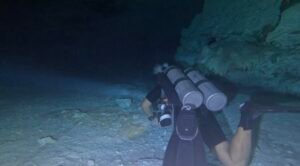Welcome, fellow diving enthusiasts! Whether you’re an experienced diver or just dipping your toes into the underwater world, understanding the language of scuba diving is essential for a safe and enjoyable experience. Welcome to the ABCs of Diving, where we will explore different scuba diving terms as we go through the alphabet. To read previous posts from this column check out our other blogs. Today we move onto the letter B:

Backplate: A rigid plate typically made of stainless steel or aluminum that serves as the backbone of a diving harness. It provides stability and attachment points for various diving equipment, such as cylinders and weight systems.
Backward Roll Entry: A technique used to enter the water from a boat or platform where the diver rolls backward off the edge, allowing for a controlled and streamlined entry into the water. It’s often preferred in rough sea conditions or when wearing bulky gear.
Balanced Regulator: A type of diving regulator designed to provide consistent airflow to the diver regardless of changes in tank pressure or depth. This helps maintain breathing comfort and reduces the risk of breathing resistance underwater.
BCD (Buoyancy Control Device): A vital piece of diving equipment worn by divers to control buoyancy underwater. It consists of an inflatable bladder that can be inflated or deflated to adjust buoyancy, allowing divers to ascend, descend, or maintain neutral buoyancy.
Blue Hole: A natural phenomenon characterized by a deep, circular hole in the ocean floor, often surrounded by shallow waters. Blue holes are renowned for their biodiversity and unique underwater ecosystems, attracting divers from around the world.

Buddy: A diving partner with whom one dives for safety and assistance. Buddies share responsibilities such as monitoring each other’s equipment, air supply, and providing assistance in case of emergencies.
Buddy Breathing: An emergency procedure used in scuba diving where two divers share a single regulator to breathe from in the event of an out-of-air situation. This technique requires coordination and communication between the divers to ensure both receive adequate airflow.
Buoyancy Control: The ability of a diver to control their buoyancy underwater, achieved through proper weighting, equipment configuration, and breath control. Effective buoyancy control is essential for maintaining stability, conserving energy, and avoiding damage to delicate marine environments.
Whether you’re exploring shallow coral reefs in tropical waters or diving into the depths, mastering these scuba diving terms is essential for a fulfilling and sa


